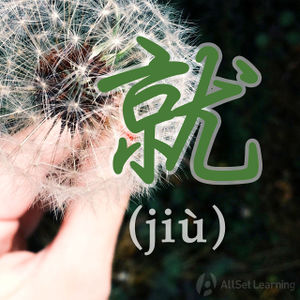Difference between revisions of "Expressing "small quantity" with "jiu""
| Line 5: | Line 5: | ||
== Structure with 就 meaning "only have" == | == Structure with 就 meaning "only have" == | ||
| − | 就 can mean "only, or only have" | + | 就 can mean "only, or only have". When using it you can add 只 and 只有, or you can leave it out. |
<div class="jiegou"> | <div class="jiegou"> | ||
| Line 16: | Line 16: | ||
<div class="liju"> | <div class="liju"> | ||
| − | * 我 <em>就</em> 只 | + | * 我 <em>就</em> 只 有 两 块 钱,别 的 没 有。<span class="trans">I only have two kuai. I don't have any more.</span> |
| − | * 为什么 这里 <em>就</em> 只 有 一 个 女 厕所,男 厕所 呢? | + | * 为什么 这里 <em>就</em> 只 有 一 个 女 厕所,男 厕所 呢?<span class="trans">Why does this place only have one girl's bathroom and one boy's bathroom?</span> |
| − | * 我 <em>就</em> 认识 一 个 中国 人。 | + | * 我 <em>就</em> 认识 一 个 中国 人。<span class="trans">I only know one Chinese person.</span> |
</div> | </div> | ||
| − | |||
== Structure with 就 meaning "just one" == | == Structure with 就 meaning "just one" == | ||
Revision as of 10:07, 3 June 2013
-
Level
-
Similar to
-
Used for
-
Keywords
就 is often translated as simply "just", but there are some nuances to how it is used.
Contents
Structure with 就 meaning "only have"
就 can mean "only, or only have". When using it you can add 只 and 只有, or you can leave it out.
Subject + 就 + (只) + Verb
Examples
- 我 就 只 有 两 块 钱,别 的 没 有。I only have two kuai. I don't have any more.
- 为什么 这里 就 只 有 一 个 女 厕所,男 厕所 呢?Why does this place only have one girl's bathroom and one boy's bathroom?
- 我 就 认识 一 个 中国 人。I only know one Chinese person.
Structure with 就 meaning "just one"
就 can also be used to express one person or thing, similar to how we say in English "just one person" or "just one left". It is often paired with 一个 or something like that.
就 + single things or persons
Examples
- 这 件 事 就 我 一 个 人 知道。
- 你 觉得 别人 都 是 傻子 吗?就 你 懂 得 多?
- 房间 里 就 一 张 床,一 张 桌子。
See also
- Comparing "cai" and "jiu"
- Events in quick succession with "yi... jiu"
- Expressing earliness with "jiu"
- Expressing indifference with "jiu"
- Limiting Scope with "jiu"
- "If…, then…" with "ruguo…, jiu…"
Sources and further reading
Books
Dictionaries
- 现代汉语词典(第5版) (p. 733) →buy



